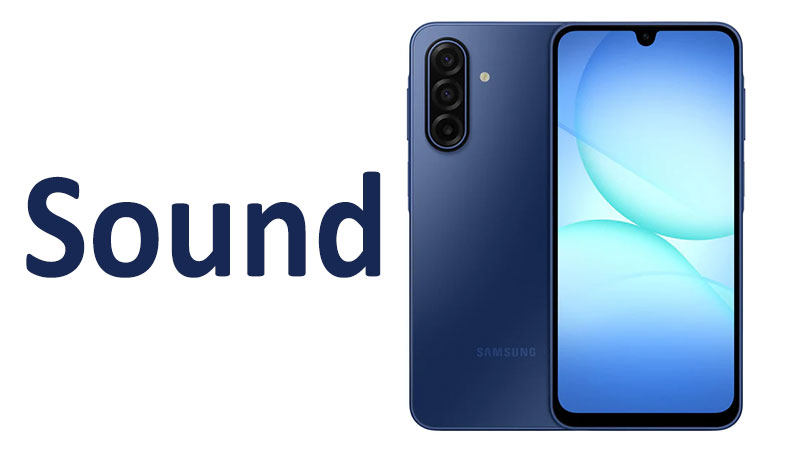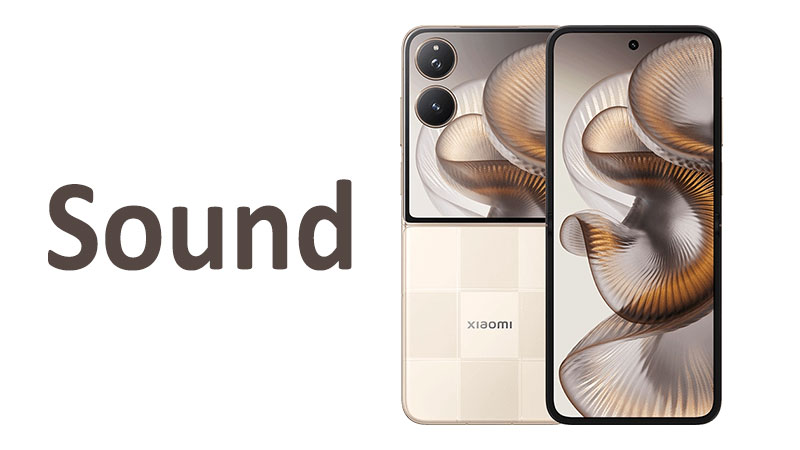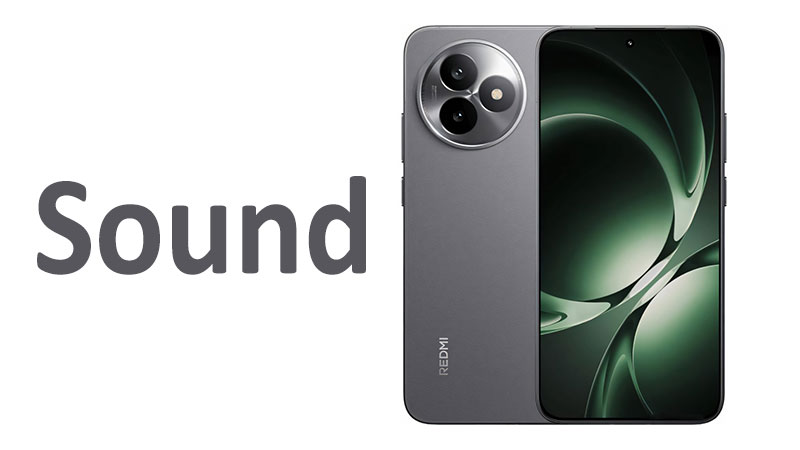The Samsung Galaxy A17 Sound capabilities are essential for this popular entry-level smartphone. Audio quality holds significant importance for consumers in the budget segment. Users demand clear, functional built-in speakers for their daily media needs. Furthermore, reliable support for external audio remains a critical factor. This detailed review explores every key aspect of the Samsung Galaxy A17’s sound system meticulously. We will examine the specific hardware configuration and the specialized software processing. Understanding these elements is essential for maximizing the device’s affordable multimedia potential effectively. This analysis helps potential buyers determine if the sound quality meets their specific budget expectations.
Acoustic Hardware and Speaker Configuration
The Samsung Galaxy A17 uses an acoustic setup common in the entry-level smartphone market. This configuration is budget-conscious yet designed for maximum daily utility. The speaker system is the primary component for hands-free audio playback. Careful attention to design ensures clarity despite size and cost limitations. Understanding the hardware shows where the phone excels and where limitations apply.
Speaker System Overview: Mono Output
The Galaxy A17 typically features a single, down-firing mono speaker. This is a standard characteristic for devices positioned in the entry-level segment. A single speaker delivers sound primarily from the bottom edge of the phone. This placement directs audio outwards when the phone sits upright. However, this positioning can present challenges during horizontal media consumption. Users often find their hand blocks the sound output when gaming or watching movies. This mono configuration provides sufficient volume but lacks true stereo separation.
Driver Technology and Construction
The single speaker driver is engineered for efficiency and loudness. It uses standard materials optimized for cost-effectiveness and durability. The driver’s internal chamber size is generally small due to the phone’s compact design. This small chamber size inherently limits the speaker’s ability to produce deep bass frequencies. The phone likely uses a basic Power Amplifier (PA) chip. This PA manages the speaker’s power output effectively. It helps to prevent basic forms of distortion at moderate volume levels. However, it may not include the advanced real-time management of a “Smart PA.”
Design Implications for Audio
The design of the Galaxy A17 prioritizes lightness and low cost. These priorities directly impact the speaker hardware choices. The single, bottom-firing placement simplifies the internal acoustic engineering significantly. This choice keeps production costs low for the manufacturer. Buyers should know this design choice focuses on functional loudness over complex spatial audio. The thinness of the phone chassis also minimizes the space available for the speaker cavity. Consequently, the audio performance leans towards clear midrange and treble rather than deep, resonant bass.
Specialized Comparison: A17 Speakers vs. A15 Speakers
The Samsung Galaxy A17’s speaker setup is often similar to its immediate predecessor, the Galaxy A15. Both devices typically rely on a single, bottom-firing mono speaker. This continuity suggests Samsung prioritizes consistent, functional sound in the A-series budget lineup. Competitors in the same price bracket sometimes offer a hybrid stereo setup. A hybrid setup uses the earpiece as a secondary speaker. The A17 sticks to the more straightforward, cost-effective mono setup. This means the audio experience is louder than older single-speaker phones but not as immersive as modern stereo rivals.
Acoustic Performance and Sound Signature
Evaluating the sound quality of the Samsung Galaxy A17 involves reviewing its specific frequency performance. As a budget phone, its goal is clear, intelligible sound, not high-fidelity reproduction. The sound signature is generally tuned for clarity in the voice range. This tuning choice makes it suitable for calls, podcasts, and general media.
Frequency Response Breakdown: Bass Performance
The bass response on the Galaxy A17 is modest and functional, as expected. Low-end frequencies lack significant depth or resonant impact. Sub-bass frequencies are often minimally reproduced by the small driver. The speaker focuses on upper-bass presence rather than deep, foundational rumble. This tuning is practical because it avoids pushing the small driver into distortion. Users should not expect a punchy or impactful bass for hip-hop or action movie soundtracks. However, the bass is present enough to ground most pop music tracks.
Frequency Response Breakdown: Midrange Clarity
The midrange is the strongest and most focused area of the A17’s sound profile. This tuning decision is strategic for a phone aimed at general users. Vocals, dialogue, and phone calls are reproduced clearly and effectively. The clarity in this crucial range ensures excellent intelligibility for spoken content. Most instrumental sounds like guitars and pianos are handled well. The clarity of the midrange significantly enhances the experience of podcasts and YouTube videos. This focus helps the phone perform well for daily communication needs.
Frequency Response Breakdown: Treble Response
The treble response is crisp but generally controlled to prevent harshness. High-frequency sounds like cymbals or high notes are easily audible. Samsung tunes the treble to add brightness without becoming sibilant or fatiguing. If the volume is set too high, a slight tinny quality can sometimes become noticeable. Overall, the treble is balanced enough to provide detail. It helps distinguish sounds without making the listening experience uncomfortable over time. The tuning avoids excessive brightness which can often distort on mono speakers.
Loudness, Distortion, and Clarity Metrics
The Galaxy A17 achieves a competitive maximum loudness level for its class. It is loud enough for listening in a quiet room or for simple outdoor use. However, distortion begins to creep in noticeably at the highest 90% to 100% volume settings. This is a common limitation of entry-level drivers and simple PA systems. Users should keep the volume slightly below maximum for the clearest sound. The overall sound clarity is excellent up to about 75% volume. Beyond this point, the single speaker struggles to maintain the same level of integrity.
Soundstage and Immersion Quality
Due to the mono speaker configuration, the soundstage is naturally limited. There is no true stereo separation or spatial effect when using the internal speaker. Audio elements sound centralized, originating from the single point on the bottom. This reduces the sense of immersion during cinematic or gaming experiences. For maximum immersion, users should rely entirely on external headphones. The internal speaker serves a basic function: delivering loud, clear, and functional audio output.
Wired and Wireless Audio Connectivity
The Samsung Galaxy A17 offers essential connectivity features for external audio devices. These features are highly valued by users in this budget-conscious market segment. Users require flexibility for connecting their various headphones and accessories easily. The phone supports necessary formats across both its wired and wireless connections.
The Inclusion of the 3.5mm Headphone Jack
The Samsung Galaxy A17 proudly retains the traditional 3.5mm headphone jack. This feature is a major selling point in the entry-level and mid-range markets. It allows users to connect their favorite wired headphones directly without purchasing an adapter. The integrated analog output relies on an internal audio codec chip. This chip handles the Digital-to-Analog Conversion for the wired connection. The output power is sufficient for driving most standard consumer earbuds and low-impedance headphones effectively. The presence of the jack adds significant versatility and convenience for wired listening.
Digital Audio Output via USB-C
The device also supports digital audio output through its USB-C port concurrently. This feature is useful for users with modern USB-C headphones or simple portable DACs. The phone can output a clean digital stream to these external components easily. This setup allows the external device to manage the final audio conversion process. Digital output reliably supports basic formats, typically up to 16-bit/48kHz PCM. This covers standard CD-quality audio files effectively. This dual connectivity approach maximizes user flexibility and choice overall.
Standard Bluetooth Codec Support
For wireless listening, the Galaxy A17 offers reliable support for essential Bluetooth codecs. It supports core industry codecs like SBC and AAC consistently. AAC (Advanced Audio Coding) provides better quality than the basic SBC codec on compatible devices. This level of support is adequate for general wireless earbuds and headphones. It delivers a decent quality listening experience for most streaming services. However, users should note the phone generally lacks support for high-resolution codecs. It typically omits premium options like LDAC or aptX HD/Adaptive. This is a reasonable limitation for a budget device.
Specialized Comparison: Wired vs. Budget Rivals
The inclusion of the 3.5mm jack gives the Galaxy A17 a competitive edge over some rivals. Many budget competitors have recently removed this highly convenient feature. Furthermore, the simultaneous support for USB-C digital audio maintains modern compatibility. The audio output quality via the jack is consistent and clean for the price point. While the wireless codec support is basic (AAC), it is sufficient for the majority of mainstream wireless listening needs. The A17 prioritizes practical, versatile, and accessible connectivity options.
Software Optimization and Audio Features
The audio hardware of the Samsung Galaxy A17 is significantly enhanced by specialized software optimization. These key features are integrated directly into Samsung’s One UI operating system. The software includes several audio-specific enhancements for the user. These are designed to customize and dramatically improve the overall listening experience effectively. This software layer is vital for maximizing the sound quality through headphones.
Dolby Atmos Support for Headphones
The most significant software feature is the inclusion of Dolby Atmos sound enhancement. While the feature does not significantly benefit the internal mono speaker, it is transformational for headphones. Dolby Atmos creates a highly immersive, multidimensional sound field when activated. This technology adds a crucial sense of height and width to the audio mix. This greatly enhances the realism in mobile gaming and cinematic viewing experiences. Users must plug in headphones or connect wireless earbuds to experience this enhancement fully. This feature is a major value-add for budget audiophiles.
Customization and Equalization Tools
The phone includes robust and user-friendly tools for personalized audio tuning. Users can easily access detailed audio settings within the One UI system menu interface. A multi-band graphic equalizer is provided for fine-tuning the sound signature precisely. This allows advanced users to tailor the sound to their liking easily. Presets optimized for various genres like Pop, Rock, and Jazz are readily available. Furthermore, Samsung often includes its “Adapt Sound” feature. This feature creates personalized sound profiles based on the user’s age and hearing sensitivity. This highly granular customization improves sound quality for every user.
Microphone and Recording Quality
The Samsung Galaxy A17 features a functional multi-microphone array for communication. This array is designed for clear voice capture during calls and basic recording. Software processing includes basic environmental noise reduction technology. This system filters out common background noise during phone calls effectively. It helps to ensure that the user’s voice remains clear and intelligible on the receiving end. The recording quality is entirely suitable for voice notes and casual video recording. However, it lacks the advanced audio zoom or wind noise suppression found in premium flagships.
Specialized Comparison: Software vs. Budget Competitors
The inclusion of Dolby Atmos is a clear software advantage for the Galaxy A17. Many budget competitors omit this powerful licensing and feature entirely. This feature alone drastically improves the quality of the headphone experience. Samsung’s full-featured graphic equalizer and the unique Adapt Sound tool also stand out. These customization options are often simpler and more intuitive than those offered by rival brands. The A17 uses its software stack to provide a much richer audio experience than its basic speaker hardware suggests.
Buyer’s Guide: Pros, Cons, and Key Considerations
The audio experience of the Samsung Galaxy A17 is practical and competitive for its budget segment. It strongly appeals to users prioritizing essential features, versatility, and the headphone jack. Potential buyers must carefully weigh the system’s strengths against its key limitations. This balanced assessment ensures an informed and confident purchase decision overall.
Pros of the Audio System
The benefits of the Samsung Galaxy A17’s advanced audio setup are numerous and highly compelling.
- Dedicated Headphone Jack: The 3.5mm jack provides crucial compatibility and user choice instantly.
- Dolby Atmos Integration: This software feature significantly enhances headphone and earbud listening quality.
- Excellent Midrange Clarity: The internal speaker is tuned well for clear calls and dialogue consumption.
- Comprehensive Customization: The full graphic equalizer and Adapt Sound feature allow detailed user tuning.
- Functional Speaker Loudness: The mono speaker is loud enough for most basic daily listening scenarios.
Cons of the Audio System
While the system is impressive for the price, it does have a few limitations typical of a budget device.
- Mono Speaker: The single speaker severely limits audio immersion and stereo effects.
- Bass Deficiency: The small driver design prevents deep, impactful bass performance entirely.
- Limited Wireless Codecs: The phone lacks support for advanced high-resolution codecs like LDAC or aptX HD.
- Distortion at Max Volume: Sound integrity noticeably degrades when the volume is turned up past 90%.
Important Points a Buyer Should Know
A reader considering the Samsung Galaxy A17 must fully understand its detailed audio design. This crucial understanding helps to set accurate expectations for the device’s sonic capabilities effectively.
First, utilize the headphone jack. This included feature is a major benefit for anyone owning quality wired headphones. It bypasses the need for easily lost adapters completely and saves money.
Second, always use Dolby Atmos with headphones. This setting is the single greatest audio improvement available on the device. It must be manually enabled in the sound settings menu.
Third, manage speaker expectations. The mono speaker is best used for calls, alerts, and podcasts. For music or movies, headphones are absolutely mandatory for a good experience.
Fourth, keep the volume moderated. To maintain the best possible clarity and avoid noticeable distortion, keep the internal speaker volume around 75% to 80% maximum.
Finally, appreciate the versatility. The phone offers both the 3.5mm jack and USB-C digital output. This dual connectivity approach offers maximum choice for all types of accessories.
Conclusion
The Samsung Galaxy A17 Sound system delivers a highly capable and satisfying auditory experience for its specific price point. The phone provides essential features that users need and value highly. The combination of a functional mono speaker and the much-appreciated 3.5mm headphone jack is a practical choice. Its true audio strength lies in the software side of the equation. Specifically, the inclusion of Dolby Atmos and the personalized Adapt Sound features drastically enhance headphone listening. While the internal speaker is merely functional, the external audio experience is surprisingly robust and customizable. The Samsung Galaxy A17 is an ideal choice for users prioritizing an affordable phone with versatile connectivity. Its commitment to software enhancement makes it a sound choice among budget-friendly smartphones.
Frequently Asked Questions (FAQ)
1. Does the Samsung Galaxy A17 include a 3.5mm headphone jack?
Yes, the Samsung Galaxy A17 includes the traditional 3.5mm headphone jack for wired audio.
2. Is the internal speaker on the Galaxy A17 stereo or mono?
The internal setup is a single, down-firing mono speaker, which is common in this price range.
3. Does the Galaxy A17 support Dolby Atmos?
Yes, it supports Dolby Atmos, but the effect is primarily noticeable when using headphones or earbuds.
4. What high-resolution Bluetooth codecs does the A17 support?
The A17 typically supports standard codecs like SBC and AAC but generally lacks advanced codecs like LDAC.
5. Can the audio output be customized for individual hearing?
Yes, the phone features Samsung’s “Adapt Sound” tool for creating personalized sound profiles.



